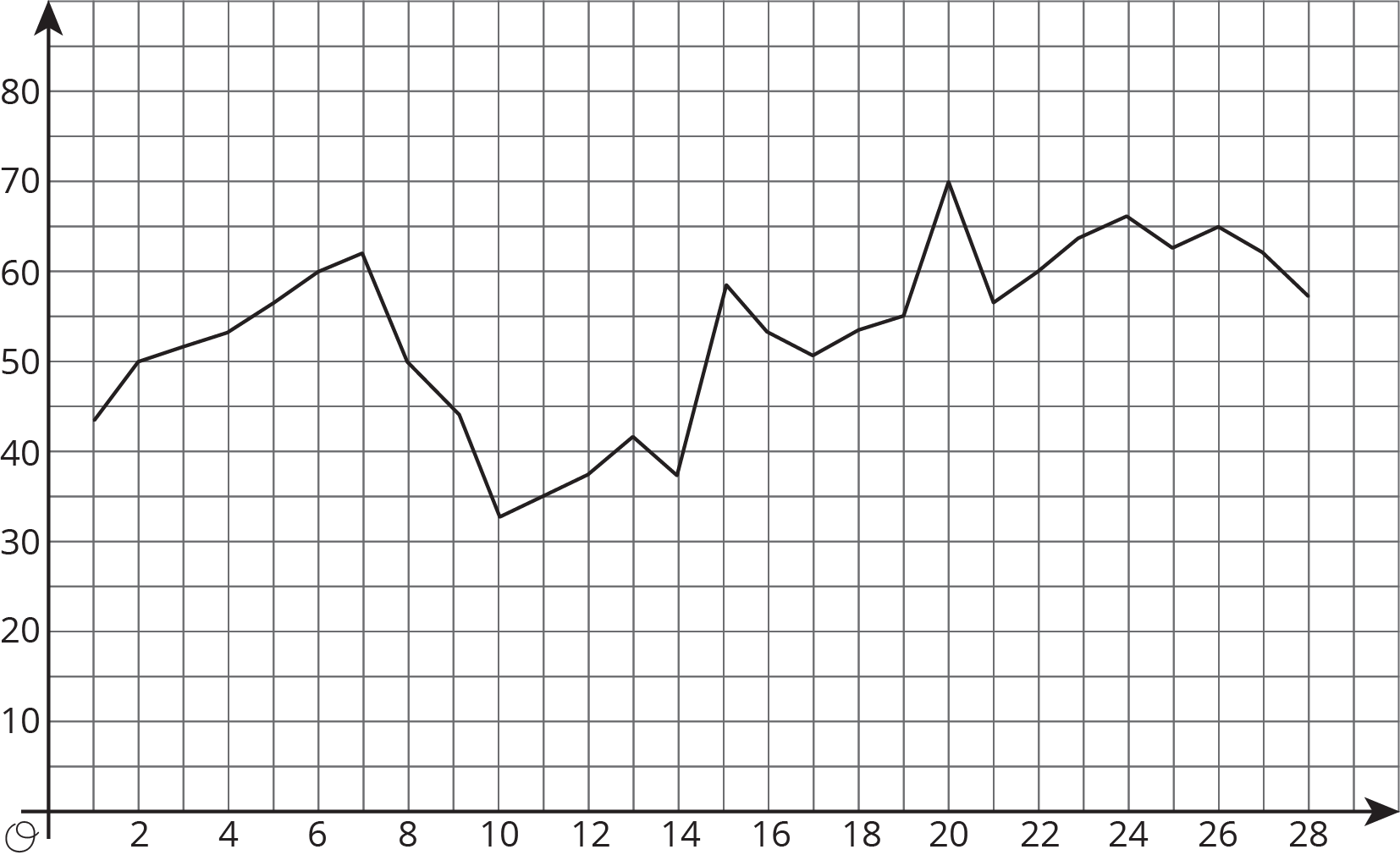Lesson 14
Multiplying, Dividing, and Estimating with Scientific Notation
Let’s multiply and divide with scientific notation to answer questions about animals, careers, and planets.
Problem 1
Evaluate each expression. Use scientific notation to express your answer.
- \((1.5 \times 10^2) (5 \times 10^{10})\)
- \(\dfrac{4.8 \times 10^{\text-8}}{3 \times 10^{\text-3}}\)
- \((5 \times 10^8) (4 \times 10^3)\)
- \((7.2 \times 10^3) \div (1.2 \times 10^5)\)
Problem 2
How many bucketloads would it take to bucket out the world’s oceans? Write your answer in scientific notation.
Some useful information:
- The world’s oceans hold roughly \(1.4 \times 10^{9}\) cubic kilometers of water.
- A typical bucket holds roughly 20,000 cubic centimeters of water.
- There are \(10^{15}\) cubic centimeters in a cubic kilometer.
Problem 3
The graph represents the closing price per share of stock for a company each day for 28 days.
- What variable is represented on the horizontal axis?
- In the first week,
was the stock price generally increasing
or decreasing? - During which period did the closing price of the stock decrease for at least 3 days in a row?

Problem 4
Write an equation for the line that passes through \((\text- 8.5, 11)\) and \((5, \text- 2.5)\).
Problem 5
Explain why triangle \(ABC\) is similar to triangle \(CFE\).
